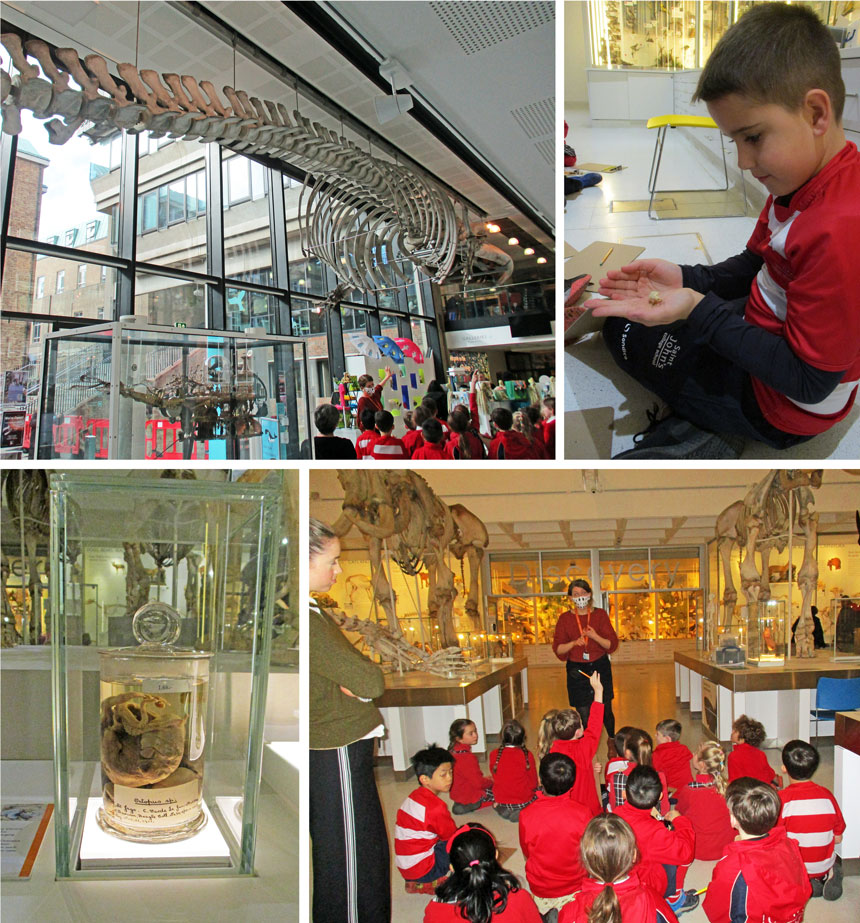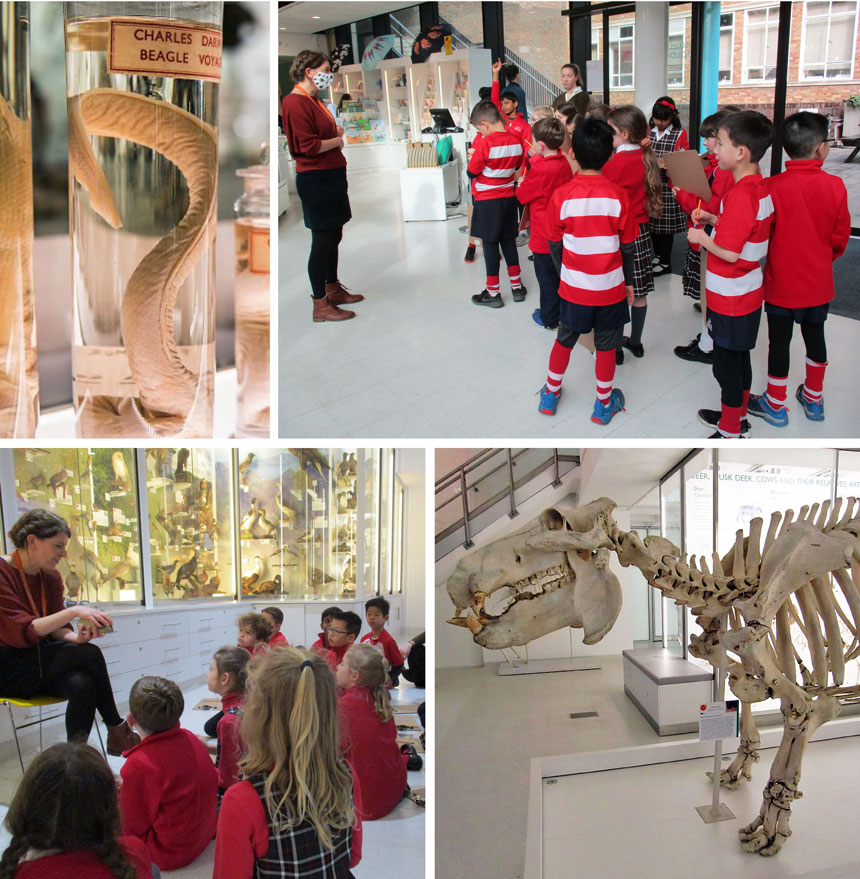2K visited the Cambridge Zoology Museum as part of their child-led learning topic this term. The session focused on exploring animal skeletons: what they are, how they work and why they are important. This reiterates part of the topic they are studying in school about adaptation, evolution and the work of evolutionary British biologist and naturalist, Charles Darwin and his theory of natural selection.

In the museum-led part, the children learned about the skeleton and spent some time comparing the skeletons of various animals, especially the skulls. The session began with a discussion of what a skeleton is and the different components of a mammalian skeleton using specimens in the displays and comparisons with our own. During the handling session, the pupils studied the composition of bones and had a detailed look at the structure of the skull and adaptations for feeding. Apart from exploring all the exhibits in the Museum, one of the highlights was seeing Darwin’s actual specimens that he brought back on HMS Beagle.
Class teacher, Mrs Clare Knoop, explained, ‘We had already looked at pictures in class but the children were especially excited to see the real things, especially the octopus in the jar, the beetle box and the finches.’ Darwin’s beetle box contains some of the beetles that Darwin himself collected. It includes a wide range of species, including many ground beetles. Some of the species that Darwin collected can still be found around Cambridge, particularly in local wetland reserves. However, others have become rare or have disappeared.

Back in class, the children are now focusing on studying Darwin’s theory of evolution in more depth and carrying out experiments to look at how different beaks are adapted for eating different foods.
Charles Darwin was invited on board the HMS Beagle as the Captain's Companion and naturalist. In his time aboard the Beagle, Darwin described and collected many new types of animals and plants. Having studied his journey, the children are keen to undertake a piece of creative writing, composing stories based on their own ideas about being an explorer and discovering unknown species.